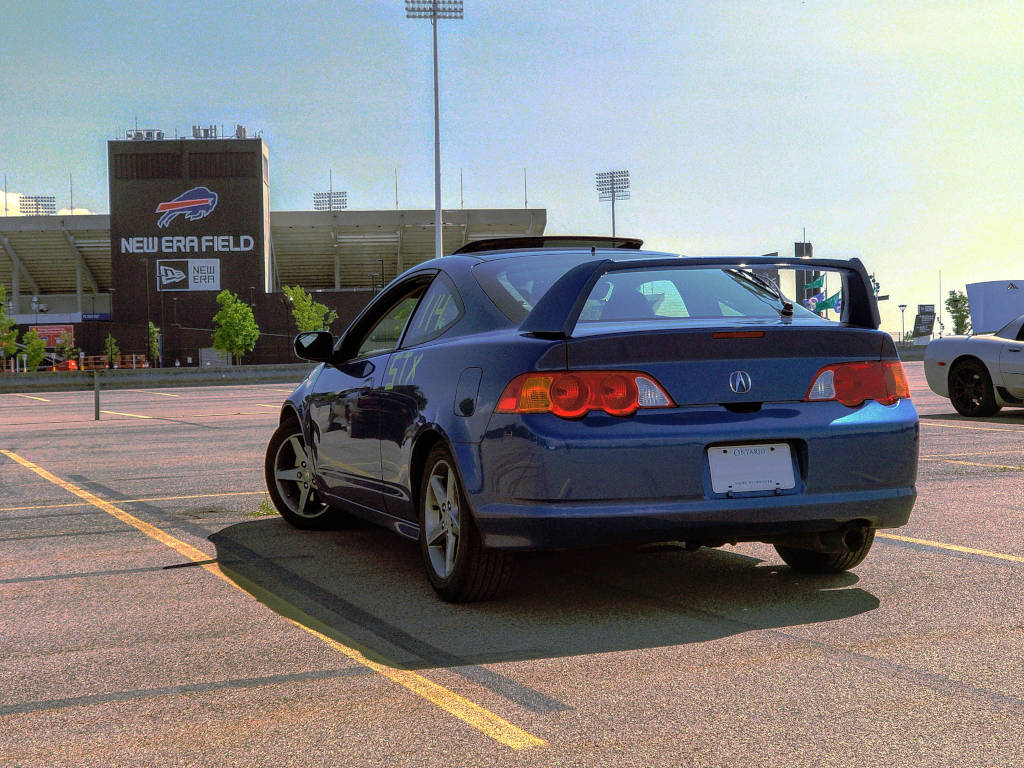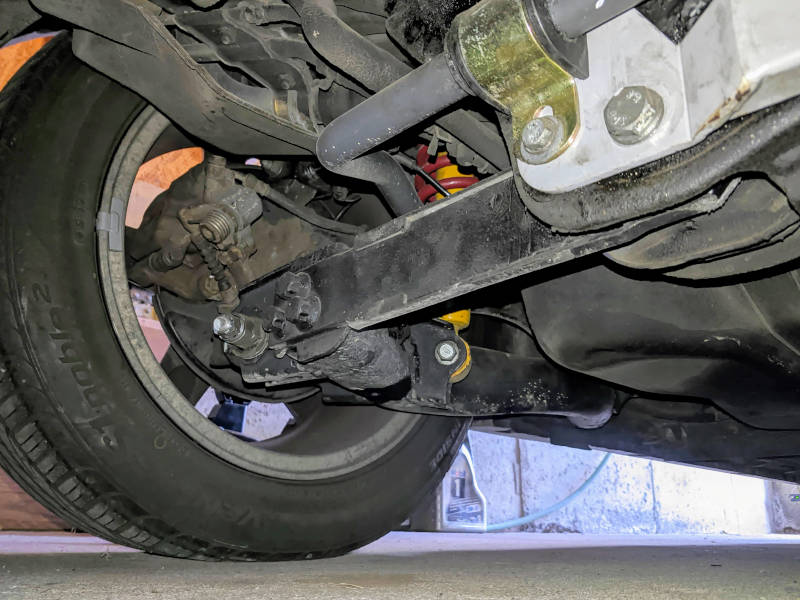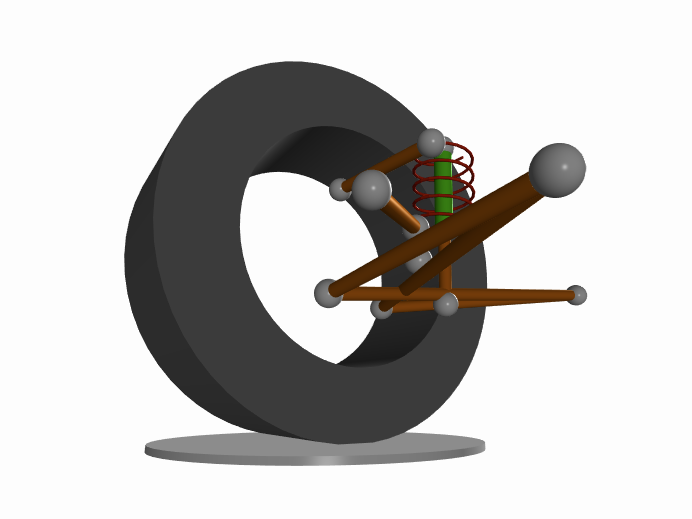Motion ratio curves of the Acura RSX rear suspension
This article is part of a series on the kinematic simulation and analysis of the Acura RSX suspension. To learn more, feel free to check my other posts:
Front Suspension
- Analysis of the Acura RSX front suspension geometry
- Kinematic curves of the Acura RSX front suspension
- Motion ratio curves of the Acura RSX front suspension
- Kinematic roll centre analysis of the Acura RSX front suspension
Rear Suspension
- Kinematic curves of the Acura RSX rear suspension
- You are here! - Motion ratio curves of the Acura RSX rear suspension
- Kinematic roll centre analysis of the Acura RSX rear suspension
Full Vehicle

Modern vehicle suspension systems are carefully designed to react handling loads while maintaining good ride and comfort. Performance objectives are often at odds with chassis packaging where cabin space takes precedence over suspension packaging. For performance enthusiasts hoping to operate the car at its limits, it means dealing with compromises from the factory.
The Acura RSX is an example of a car that has this challenge. As a daily driver, its compact rear suspension makes it a very practical car. From a performance perspective, the tradeoffs to achieve this are less clear. To answer this, we ran a series of kinematic studies.
This is article, we measure the motion ratios of the rear coilover assembly and anti-roll bar using kinematic simulation.
Suspension Design
The Acura RSX rear suspension features an H-arm and camber link. The H-arm is formed by the lower control arm and is responsible for reacting braking and cornering forces. The camber link forms the upper control arm and reacts only cornering forces. Both lower and upper control arms locate the front-view kinematic roll centre. The side-view kinematic instant centre is controlled solely by the lower control arm. The rear suspension is pictured below with the real life and virtual representations shown on the left and right respectively.


This suspension topology is cost effective with minimal compromise on kinematic performance. Its compact size and reduced chassis attachment points contribute to its cost effectiveness. Aftermarket adjustment to the geometry is limited since the lower control arm has the responsibility of four links. Practically any major change to the suspension geometry would require a completely new knuckle or lower control arm. Fortunately, we can analyze the design to determine how to make the most of it without resorting to modification.
Motion Ratios
The effect of a resistive element in a suspension system is multiplied by some kinematic factor representing the mechanical advantage or disadvantage as experienced at the wheel centre. This is important to consider because the effect of a spring rate or anti-roll bar change can be more or less due this advantage.
In this analysis, we define the motion ratio as the rate of change of an element’s displacement relative to the wheel centre vertical position. The quantities are numerically differentiated using a second-order central difference. Mathematically:
\[{MR} = \frac{dx_{elem}}{dx_{wc,z}}\]Where:
- \(dx\_{elem}\) is the change in the element length
- \(dx\_{wc,z}\) is the change in the wheel centre vertical position
The Acura RSX rear suspension has two motion ratios of interest: the coilover assembly and the anti-roll bar. Both the coilover assembly and the anti-roll bar are actuated via the lower control arm.
Coilover Motion Ratio
The coilover assembly on the rear suspension contains both the spring and the damper. Because they act on the same line-of-action, they share the same motion ratio. The assembly is laterally offset from the wheel centre plane so a reduced motion ratio is expected.
The motion ratio is 0.586 mm displacement per mm of wheel centre travel at factory ride height. You can expect the motion ratio to decrease in bump.
Anti-roll Bar Motion Ratio
The rear anti-roll bar is actuated by an end link attached to the lower control arm. This design packages nicely, but is suspectable to motion ratio variation due to change in angle of the end link. The anti-roll bar twist angle is measured as the side-view angle of the arm relative to the horizontal plane.
The motion ratio is 0.201 deg of twist per mm of wheel centre travel at factory ride height. You can expect the motion ratio to decrease in bump.
Final Comments
The packaging constraints faced by the manufacturer are apparent when analyzing the motion ratios of the Acura RSX rear suspension. Because the coilover assembly is offset from the wheel centre, the motion ratio is reduced. A contrasting difference with the front axle is that the rear anti-roll bar motion ratio is approximately double the front.
Motion ratios are important when choosing aftermarket springs or dampers. Stiffness is doubly reduced due to the mechanical disadvantage and the lessened displacement. Knowing the motion ratios for your car are a huge help to chassis setup - an advantage for anyone developing a car!
Acknowledgements
This work is made possible with help from Ping Zhang at Formula Delta who shared the suspension points for the Acura RSX. You can learn more about Ping and his time attack project on his website, Facebook or Instagram.
References
- Milliken, William F., and Douglas L. Milliken. Race car vehicle dynamics. Vol. 400. Warrendale: Society of Automotive Engineers, 1995.
- Blundell, Michael, and Damian Harty. Multibody systems approach to vehicle dynamics. Elsevier, 2004.

